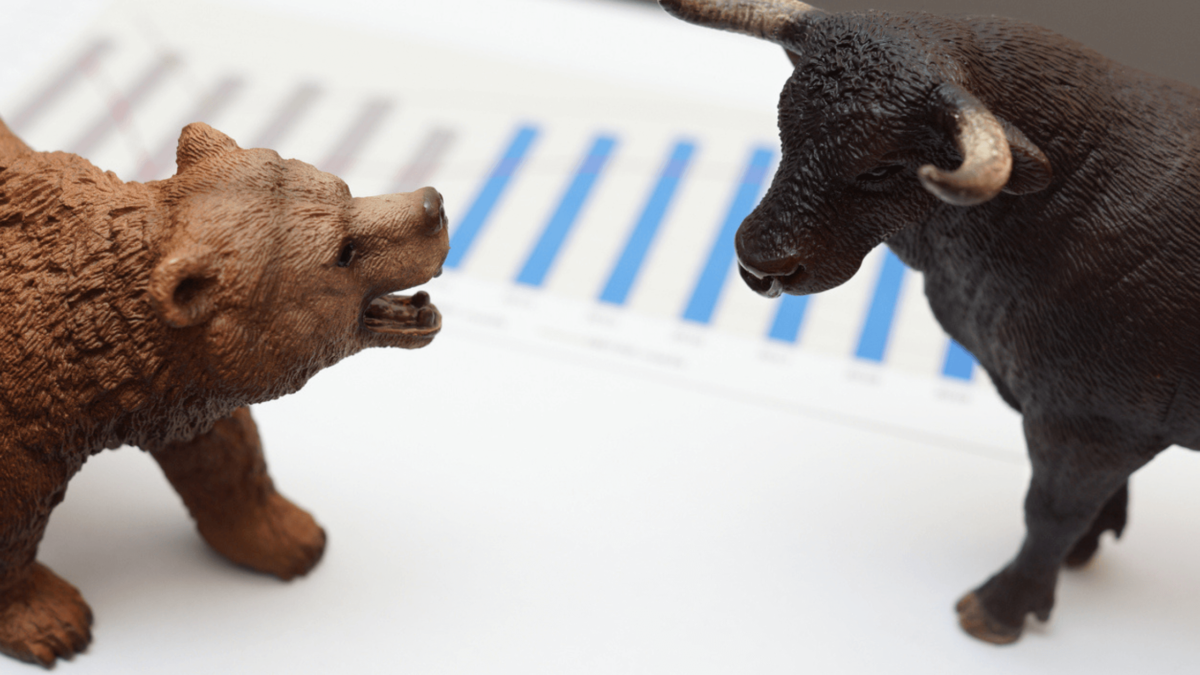From Inflation Fear to Recession Panic: How to Position Your Portfolio?
July 5, 2022

Investors are getting to grips with a new reality; stock markets have turned from inflation fear to recession panic.
And this is exactly in line with what I wrote in last week’s Big Money – that “US recession fears will likely gather momentum soon.”
The only thing is that “soon” came in a rush last week, taking the S&P 500 Index back on its downtrend channel.
It’s clear that US consumers continue to lose their “mojo”. The Conference Board’s Consumer Confidence Index was one of the datapoints that dampened market sentiment.
It went much lower to 98.7 for June, from 103.2 in May. It was not quite as gloomy as the University of Michigan Consumer Sentiment Index.
But going back to 1977, readings such as these have also been associated with either an imminent recession or, indeed, an ongoing recession.
US GDP contraction worse than expected
Another dampener was the revised 1Q GDP figure, which showed the contraction was worse than the preliminary estimate.
As a result, US GDP actually contracted 1.6% instead of 1.5% in the preliminary estimate.
But more importantly, inflation-adjusted personal consumption expenditure for May was negative 0.4%. That was quite a tumble from 0.3% growth in April.
Remember that consumption is about two-thirds of the US economy. So, if we get a deeper negative number for June, a recession becomes an immediate – rather than an imminent – threat.
Mind the gap…between expectations and reality
My call has been for around zero growth for the US economy in 2Q22. Now, the market estimate from Reuters’ surveys of economists is for 3% growth quarter-on-quarter (q/q) annualised.
The last Philadelphia Fed survey of economists showed an expectation of 2.3%. But the Atlanta Fed’s GDPNow Model turned very gloomy last week, taking its forecast for 2Q22 to a contraction of 2.1%.
If realised, that’s your two consecutive quarters of negative growth.
So, market-driven inflation expectations indicators turned down quite sharply last week. With sharp declines in the 10-year breakeven inflation rate and the 5Y, 5Y forward inflation expectations rate.
Seriously, though, rate cuts from March next year? Given the growing recession expectations, the 10-Year US Treasury (UST) yield also came down.
But more significantly, the Fed Funds Futures market is now signalling expectations of a rate cut by March next year.
The more hawkish bets on 3.75% came off and the bets on the more dovish 3.25% went up. Somewhere in there is an expectation of a 25bps rate cut by March 2023.
VILE economy set to damage stocks further
Beware the “VILE economy” – it will likely damage the stock market further, no matter what the balance between inflation and recession.
So, the question I am getting a lot right now from institutional investors is:
“How will this affect the performance of stock markets?”
For Developed Markets, particularly the US, there will likely be big mood swings ahead. There will likely be upswings on the “bad news is good news” theme.
That is, the markets may celebrate a coming economic slowdown as it may force the Fed to stop rate hiking.
But they are likely to be followed by downswings if earnings get downgraded on a slower economy. And there will periodic second thoughts about lower inflation hopes – these things don’t often move in straight lines.
The net outcome will still be, I think, lower lows and lower highs in coming months.
I had been writing about the “VILE economy” for some time – that is, the Volatile Inflation-Low Expansion economy.
This VILE beast has two hammers for fists. If the right one doesn’t get the market, the left one will.
Strategies for the declines ahead
So, what can investors do? The obvious has been outright shorts. An alternative might be a long-short spread trade.
That is, a long on Developed Market defensives, paired with a short on Developed Market cyclicals.
Over the past ten years, cyclicals have tended to outperform defensives when the US economy is strengthening.
But the reverse is also true – that is, defensives have tended to do better than cyclicals when the US economy is slowing.
This relates to Developed Market (mostly US) defensive stocks and cyclical stocks.
Defensive sectors include healthcare, consumer staples, utilities and energy. Meanwhile, cyclical sectors include technology, financials, consumer discretionary and industrials.
Update on ASEAN stock markets and China
It is still a relative outperformance play against the Developed Markets. But MSCI ASEAN is still down over 11% year-to-date. (The MSCI World was down almost 19%).
To enhance that relative outperformance – that is, to reduce the absolute negative returns – investors could consider an emerging ASEAN focus, or an underweight allocation to Singapore with overweights to other ASEAN markets.
Some exchange-traded funds (ETFs) with a pure emerging ASEAN focus have performed better than the MSCI ASEAN, which includes Singapore.
A part of Singapore’s underperformance was due to Sea Limited (NYSE: SE), which suffered a deep fall in its share price during 1H22.
And that’s non-structural. But there are also structural, economic factors which could cause an overhang for Singapore’s performance in the coming months.
Emerging ASEAN over Singapore
As a very open economy, Singapore is more vulnerable to global inflation, rates, and financial flows than her ASEAN peers.
Additionally, as long as higher rates/yields and inflation remain concerns, Singapore might be more exposed to those risks than other ASEAN-5 countries.
For absolute return investors, an alternative might be a long-short spread strategy similar to the global defensives vs. global cyclicals idea I shared earlier.
As the US economy slows, emerging ASEAN could continue to gain relatively compared to Developed Market cyclicals.
So, the idea is a long trade on emerging ASEAN paired with a short on Developed Market cyclicals.
What about China? Finally, an update here on the world’s second-largest economy – the lonely bull, actually the only bull as the CSI 300 Index has entered bull market territory.
Some weeks ago, I said to watch the 100-day moving average because breakouts above that tends to historically be bullish. Following that, the CSI 300 broke out of the 100-day moving average.
Disclaimer: CGS- CIMB Securities Chief Investment Strategist Say Boon Lim doesn’t own shares in any companies mentioned.
Say Boon Lim
Say Boon Lim is CGS-CIMB's Melbourne-based Chief Investment Strategist. Over his 40-year career, he has worked in financial media, and banking and finance. Among other things, he has served as Chief Investment Officer for DBS Bank and Chief Investment Strategist for Standard Chartered Bank.
Say Boon has two passions - markets and martial arts. He has trained in Wing Chun Kung Fu and holds black belts in Shitoryu Karate and Shukokai Karate. Oh, and he loves a beer!





